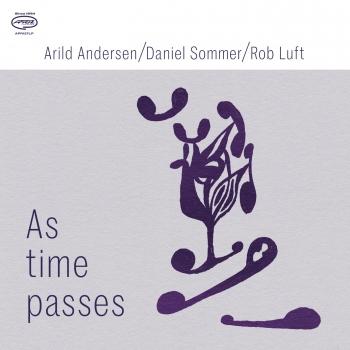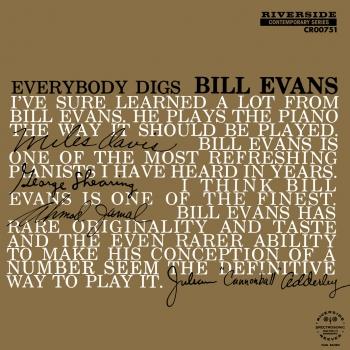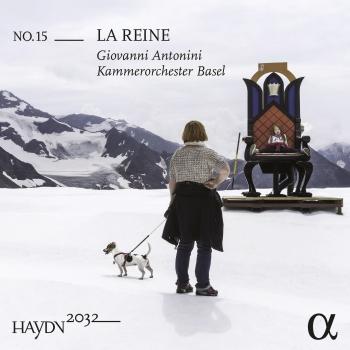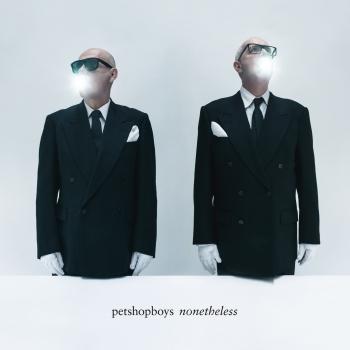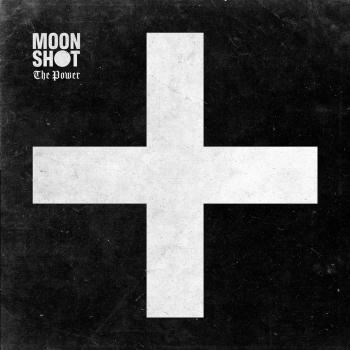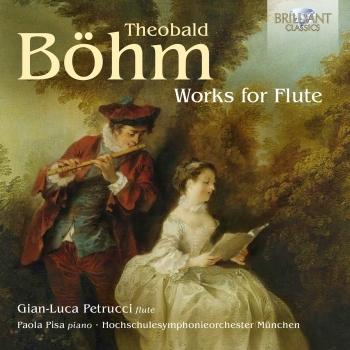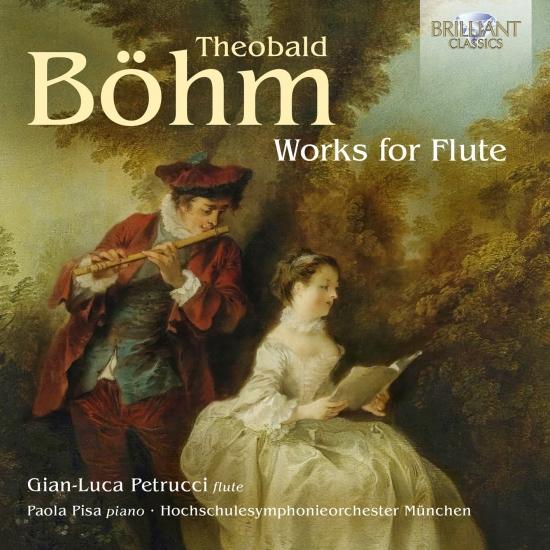
Böhm: Works for Flute Gian-Luca Petrucci, Paola Pisa, Hochschulesymphonieorchester München
Album info
Album-Release:
2024
HRA-Release:
05.04.2024
Label: Brilliant Classics
Genre: Classical
Subgenre: Concertos
Artist: Gian-Luca Petrucci, Paola Pisa, Hochschulesymphonieorchester München
Composer: Theobald Böhm (1794-1881)
Album including Album cover Booklet (PDF)
- Theobald Böhm (1794 - 1881): Divertissement sur l'air "o cara memoria" de Carafa, Op. 6a:
- 1Böhm: Divertissement sur l'air "o cara memoria" de Carafa, Op. 6a14:53
- Studio No. 4 in G Minor from 24 Etudes, Op. 37:
- 2Böhm: Studio No. 4 in G Minor from 24 Etudes, Op. 3702:14
- Aria che farò senza Euridice:
- 3Böhm: Aria che farò senza Euridice03:59
- Adagio from the Sonata, KV 332:
- 4Böhm: Adagio from the Sonata, KV 33204:42
- Ständchen from Schwanengesang, D957 No. 4:
- 5Böhm: Ständchen from Schwanengesang, D957 No. 404:08
- Das Fischermädchen Song from Schwanengesang, D957:
- 6Böhm: Das Fischermädchen Song from Schwanengesang, D95703:26
- Rondò, KV 511:
- 7Böhm: Rondò, KV 51111:37
- Aria tre giorni son che Nina:
- 8Böhm: Aria tre giorni son che Nina03:15
- Aria (Cantabile) from the 3rd Orchestrasuite, BWV 1067:
- 9Böhm: Aria (Cantabile) from the 3rd Orchestrasuite, BWV 106703:48
- Andante con variazioni from the Serenade, Op. 25:
- 10Böhm: Andante con variazioni from the Serenade, Op. 2504:19
Info for Böhm: Works for Flute
Theobald Böhm, who was born in Munich on 9 April 1794, was among the most accomplished German flautists of his age and was a composer and an ingenious inventor who perfected the construction of the flute.
Over and above his commitment to scientific and organological research, Böhm pursued activities as a composer for his instrument and continued to make transcriptions of celebrated works by the Classical and Romantic masters right up until his death on 25 November 1881. In both his pieces based on original themes and the series of variations on melodies drawn either from popular operas or from well-known popular tunes, the stylistic techniques distinguishing his compositions were fully in line with the fashions of his day. Of a very different nature, on the other hand, is the sophistication displayed in his search for an elevated and musically complex idiomatic language for the flute in his transcriptions of works by the great composers, including Christoph Willibald Gluck, Wolfgang Amadeus Mozart and the two near-contemporaries Ludwig van Beethoven and Franz Schubert. The decision to make transcribed versions of celebrated vocal or instrumental pieces was an eloquent way of stressing that the ‘new flute’ Böhm had invented could perform works that posed audacious challenges, without any expressive awkwardness. Indeed, the formulas chosen by Böhm to arrange, vary and adapt these celebrated melodies to the flute can be counted among the most original, and inmany respects unique, achievements of the age.
What emerges, therefore, is a sort of catalogue of the expressive possibilities of the ‘new flute’ and an invitation to explore the quality of sound, an aspect which he considered to be his ‘primary interest as an artist.
Gian-Luca Petrucci, flute
Paola Pisa, piano
Hochschulesymphonieorchester München
Gian-Luca Petrucci
wurde 1951 in Italien geboren und studierte Querflöte bei seinem Vater. Er war Erster Flötist des Orchesters des Teatro Regio in Parma, des Angelicum und der Pomeriggi Musicali in Mailand und des Radio Television Symphony Orchestra in Rom. Petrucci unternahm Tourneen durch Europa, die Vereinigten Staaten, Südamerika, Indien, Asien und Nordafrika, nahm zahlreiche Alben auf und gab Bearbeitungen und Transkriptionen für wichtige Verlage heraus. Als Essayist hat er historische Studien veröffentlicht, die auch ins Englische, Französische und Deutsche übersetzt wurden. Petrucci war ordentlicher Professor am Konservatorium Santa Cecilia in Rom.

